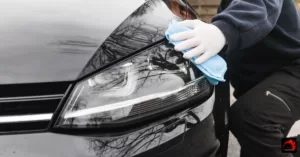For some, owning a car is a fundamental requirement; for others, it’s a status symbol; but for most of us, it’s a dream come true. For whatever reason, an automobile is a necessity. However, purchasing a car is a significant financial choice that requires much planning and saving. When consumers realized that secondhand automobiles might be just as excellent as new cars, the idea of buying a used car began to gain traction. Many of us still avoid the notion, though, as it takes extensive study and carries a sizable level of risk.
Owning a pre-owned or used automobile may be a very gratifying experience, especially if you can negotiate a decent bargain. However, buying one can be challenging. For a simple, stress-free experience, use our pre-owned automobile buying advice.
Benefits of buying a used car?
Affordability: Since depreciation and extensive usage, used automobiles are inexpensive because their value has been significantly reduced. Even though the price is sometimes associated with subpar quality, such concerns may be alleviated by purchasing certified pre-owned vehicles from reputable dealers.
Less Expensive Insurance Rates: A newer automobile will have a higher insurance premium than an older one since the Insured Declared Value (IDV) of a vehicle is inversely related to its age. A new automobile is regarded as having a higher worth, raising insurance prices. However, as soon as it accumulates miles, its perceived worth begins to decline owing to several circumstances, resulting in the insurance cost also decreasing.
Lower Rate of Depreciation: This is the critical factor that lowers the price of secondhand autos. Let’s start by defining the car’s depreciation. The depreciation rate is the rate at which one’s possessions, in this example, an automobile, lose value. The depreciation rate depends on various variables, but wear and tear or mileage is the main component that reduces a car’s worth.
The rate of depreciation increases with the mileage. And after just one year, this results in an average 15–30% value loss for a new automobile. When you try to sell a used car, there won’t be a significant decrease in value because it has already gone through the high depreciation phase.
Top 5 Tips for Buying a Used Car
1. Set a goal and a spending limit
Choosing the kind or model of the used automobile you wish to purchase is the first stage in the process. Do you want to buy an SUV, a convertible, a Toyota, or a sedan? Will you take extended road excursions on the weekends or use the automobile for your city commute to work?
Automobile selection is an essential part of buying a car. It would be prudent and cost-effective to get an automobile that fits your demands and way of life. For instance, there are better options than a large SUV for your daily commute if you are single. A family of six that enjoys taking long journeys would not be best served by a tiny car. Like buying a new automobile, you should thoroughly research your needs before purchasing a used car.
To compare and study used cars, you must go to an automobile website.
You can determine a rough budget if you know the type of automobile you wish to purchase. How will you generate the money to finance the car after having a budget?
2. Check The Vehicle
It is crucial to check for any problems before purchasing a used automobile since doing so will help you determine the right price for the vehicle’s current condition.
You could later have to pay to mend or replace the tires, so look for scratches, breakage, rusting, and the condition of the tires. If you look closely, you can spot some fresh paint or touch-ups. Make that the original engine is still housed underneath the car’s hood. Likewise, keep an eye out for any future leaks. Bring a trustworthy mechanic or car expert who can advise you about the vehicle.
3. Let us walk you through the specifics of testing a vehicle.
- Insist on driving for at least 2 km on different roads to comprehend the car and your comfort. A test drive should be long enough to inform you of the operational condition of a vehicle.
- There shouldn’t be any weird noises other than the engine’s hum when the car starts.
- The clutch should release smoothly when changing gears, and the car should drive forward without jerks.
- It shouldn’t vibrate when you’re steering. If it does, there is a severe issue.
- The automobile shouldn’t slide sideways; the brakes must also slow the vehicle down appropriately to the effort given to them. If it does, the car has a severe problem with its brakes.
- Last but not least, look for oil leaks coming from the engine and gearbox. Check to see whether anything has spilled by parking the car on a clean patch of ground. If so, some problems need to be investigated.
4. Request the vehicle’s history
The vehicle’s history is revealed by more than simply the mileage on the odometer. The state of the automobile is affected by several different things, which you should be aware of.
Request the car’s service and maintenance history. You will better comprehend what you agree to if you do this. Before you enter into a contract with the owner, be sure they have informed you of every aspect of the vehicle’s past.
Do some research on the car’s model and year of production, paying close attention to any persistent issues mentioned by drivers. While assessing the automobile, keep the manufacturer’s reputation in mind.
5. Verify The Vehicle’s Paperwork
Car papers prove that the vendor is legitimate and provide your legal security in a dispute. The fact that car papers contain all the registration and tracking information makes them quite important. Please only proceed with the deal with the car’s documents since doing so might get you into difficulty later. Before announcing your choice, get the vehicle’s original registration documents (RC book). Read the current insurance policy in detail and look up the no-claim incentive.
You will also require a valid PUC certificate, tax documentation, and permissions if you are driving a tourist car.
Certificate of Registration: This document demonstrates that you are buying a car from an authorized seller and that the transaction is genuine. You should constantly check the RC’s accuracy. The RC’s engine and chassis numbers should match the actual car’s.
Insurance: You may examine historical accident claims on the insurance to learn more about the car. This is a crucial document for ownership transfers.
Pollution Certificate: The PUC, or pollution under control certificate, is needed to determine a car’s suitability and to transfer ownership.
Road Tolls: Even if the road tax is paid at the time of purchase, you might haggle the price if it has yet to be spent on the used automobile.
Certification of No Objection: This certificate, which was issued by the financing business, confirms that all loan payments have been made in full and that the lender has no claim whatsoever on the vehicle.
To complete it, you need to have a few papers.
- A NOC and form number 35 must be submitted to the RTO to establish that the financier has no rights on the vehicle if it was acquired with a loan.
- It is necessary to present the official registration certificate (RC) to the RTO. NOCs typically remain in effect for 60 days after being issued.
- The buyer and seller must both sign Sale Transfer Form Nos. 29 and 30 in duplicate at the RTO.
- The imprint of a vehicle’s chassis number.
- Documents proving the buyer’s and seller’s identities and addresses, coupled with notarized insurance documents.
- If the seller’s address doesn’t match the identity verification, an affidavit can be necessary.
- Your PAN card or other documents should be notarized.
Avoidance tips when buying a used car
Here are some things to stay away from when buying a used automobile.
- Never purchase a secondhand automobile without taking it for a test drive.
- Remember to have a professional mechanic inspect the secondhand car.
- Never buy a used automobile based only on its appearance.
- Only acquire an automobile after first investigating the history of repairs.
Where can I find a secondhand car?
1. straight from the proprietor
A secondhand automobile can be purchased straight from the owner. It is a laborious process, though, since you must have the patience and time to examine the car with a mechanic’s assistance thoroughly.
2. Locally-based used vehicle lots
It’s simple to purchase a used automobile from a dealership since you don’t have to look for a pre-owned vehicle.
3. The used-vehicle section of an automobile company
There are departments for used cars at several automakers. A used automobile from an OEM (Original Equipment Manufacturer) dealer is significantly safer since a warranty covers it.
4. Used vehicle dealers online or on Craiglist
Online used vehicle sales may help you save much cash and time. You can also find it on craigslist. We have already prepared a guide to find craigslist cars and trucks for sale by owner, which you can find helpful.
Conclusion
Here is a comprehensive guide on buying a used automobile to assist you. For first-time automobile owners on a budget, purchasing a used car might be a reasonable alternative.





Pingback: The Ultimate Guide To Microfiber Car Cloth For Cars - 24x7 vroom